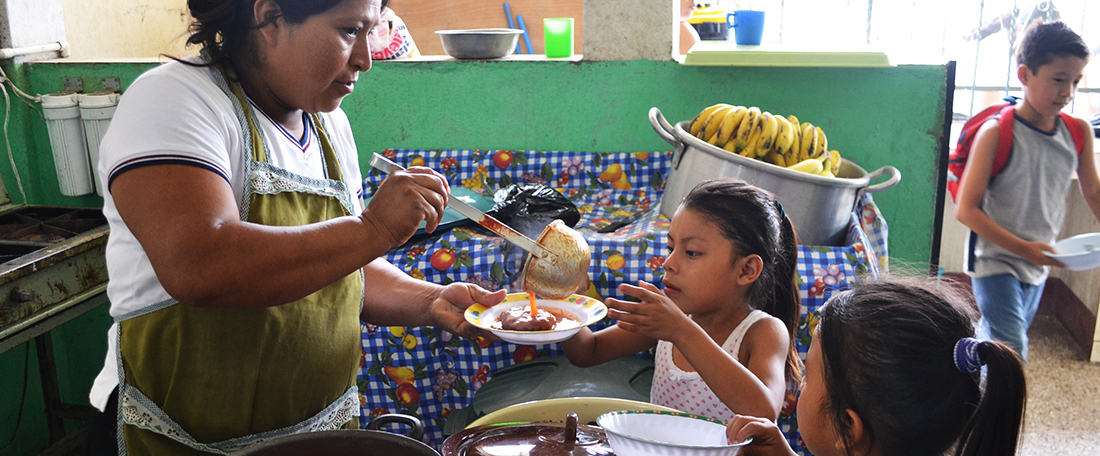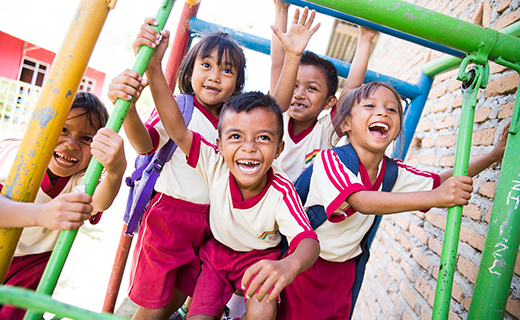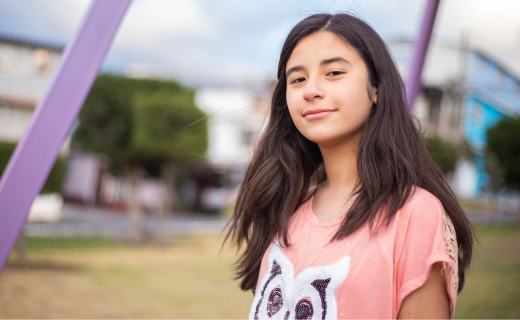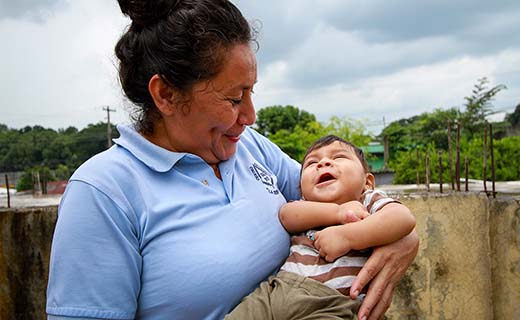Guatemala
Capital City: Guatemala City
Population: 14.91 million
Life expectancy: male 70.07 years, female 74.06 years
Population with improved drinking water: urban 98.4%, rural 86.8%
Adult literacy rate: male 87.4%, female 76.3%
Infant mortality rate: 22.73/1,000
Under 5 mortality rate: 31/1,000
Religion: Roman Catholic 95%, other 5%
Percentage living on less than $1.90 a day: 11.53%
A little bit of history
The beautiful country of Guatemala has its roots in the Maya civilization, which can be dated back to the first millennium A.D. After almost three centuries as a Spanish colony, Guatemala won its independence in 1821. However, recent history has been marred by decades of dictatorship and a fierce civil war, which raged from 1960 until 1996. Since then, there has been relative peace, but the country has paid a huge price with more than 200,000 lives lost and 56,000 children left orphaned as a result of the 36-year war.
How the country makes a living
Guatemala is the most populated country in Central America and gets the majority of its income from the export of coffee, sugar, bananas, and vegetables. Since the civil war ended, foreign investors have started to take an interest in the Central American country, but with a largely unskilled workforce and inadequate infrastructure, development remains slow. A growing problem is the unequal distribution of wealth within in the country, with the richest 20% of the population consuming more than 51% of Guatemala's wealth.
Challenges faced by children
Poverty is visible everywhere you go in Guatemala and more than half the population live below the national poverty line with 13% living in extreme poverty. As a result, nearly half of Guatemala's children under the age of five are chronically malnourished, one of the highest malnutrition rates in the world. Children from indigenous communities are particularly at risk. As families struggle to make ends meet, children are often sent to work rather than to school with 23 per cent of all children working to support their families.
Compassion in Guatemala
Compassion's work in Guatemala began in 1976. Currently, more than 52,600 children participate in 194 child development centres.
What sponsored children learn in guatemala
In Guatemala, children typically attend their Compassion projects before or after school. Older sponsored children tend to attend on a Saturday. During typical project activities, sponsored children will take part in ...
- Prayer and devotional time.
- Spiritual lessons. Children sing songs and learn Bible stories. Children aged 3-5 receive a pre-school Bible, children aged 6-8 receive a children’s picture Bible whilst older sponsored children receive a youth Bible and then a study Bible.
- Break and snack time. Children can play in a safe environment and develop friendships. Children are provided with a substantial snack every time there is an activity at the project. Snacks may consist of cereal and a banana, a sandwich and fruit.
- Social lessons. From conflict resolution to developing healthy self-esteem, children who often come from challenging home environments are taught social and personal skills.
- Lunch and social time. A typical meal consists of meat (chicken or beef), rice, vegetables and tortillas. They may also have chicken broth, a piece of chicken, vegetables and tortillas. For drinks they will have a hot beverage called atol made of different cereals like corn and wheat. In the hot areas of the country they will be given lemonade or fruit juices.
- Health lessons. Children are taught practical health and hygiene tips.
- Letter writing and career planning. Older children work with project staff to identify their strengths and interests, setting realistic goals for their future.
Additional activities offered by projects in Guatemala include:
- Older sponsored children are involved in community service, tutoring and vocational training. The projects offer vocational training including beauty school, carpentry, pastry baking, seamstress training and handicrafts. Some projects have partnered with the government organisation INTECAP (Technical Training and Productivity Institute) to give sponsored children the skills they need to be competitive in the job market.
- There are regular parents meetings to discuss each child's progress. Parents are also invited to meetings where the staff and guest speakers discuss topics on child development such as health issues and providing better care for children.





